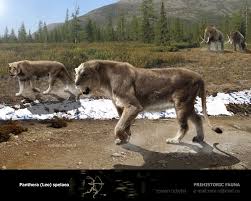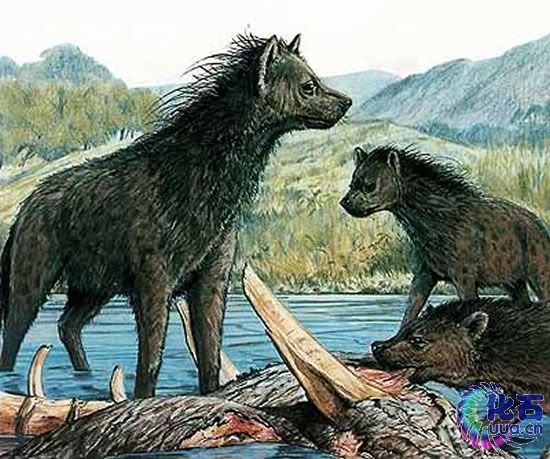Post by dinosauria101 on Jul 7, 2019 14:42:23 GMT 5
European Cave Lion - Panthera leo spelaea
Panthera leo spelaea, commonly known as the European or Eurasian cave lion, is an extinct subspecies of lion. It is known from fossils and many examples of prehistoric art. This subspecies was one of the largest lions. The skeleton of an adult male, which was found in 1985 near Siegsdorf (Germany), had a shoulder height of around 1.2 m (4 ft) and a head-body length of 2.1 m (7 ft) without the tail. This is similar to the size of a very large modern lion. The size of this male has been exceeded by other specimens of this subspecies. Therefore, this cat may have been around 8%-10% bigger than modern lions and smaller than the earlier cave lion subspecies Panthera leo fossilis or the relatively larger American lion (Panthera leo atrox). The cave lion is known from Paleolithic cave paintings, ivory carvings, and clay figurines. These representations indicate cave lions had rounded, protruding ears, tufted tails, possibly faint tiger-like stripes, and at least some had a "ruff" or primitive mane around their necks, possibly indicating males. Other archaeological artifacts indicate they were featured in Paleolithic religious rituals.

Cave Hyena (clan of 5) - Crocuta crocuta spelaea
The cave hyena (Crocuta crocuta spelaea), also known as the Ice Age spotted hyena, was a paleosubspecies of spotted hyena which ranged from the Iberian Peninsula to eastern Siberia. It is one of the best known mammals of the Ice Age and is well represented in many European bone caves. The cave hyena was a highly specialised animal, with its progressive and regressive features being more developed than in its modern African relative. It preyed on large mammals (primarily wild horses, steppe bison and woolly rhinoceros), and was responsible for the accumulation of hundreds of large Pleistocene mammal bones in areas including horizontal caves, sinkholes, mud pits and muddy areas along rivers. The cause of the cave hyena's extinction is not fully understood, though it could have been due to a combination of factors, including climate change and competition with other predators. The European cave hyena was much

Credit to Wikipedia
Panthera leo spelaea, commonly known as the European or Eurasian cave lion, is an extinct subspecies of lion. It is known from fossils and many examples of prehistoric art. This subspecies was one of the largest lions. The skeleton of an adult male, which was found in 1985 near Siegsdorf (Germany), had a shoulder height of around 1.2 m (4 ft) and a head-body length of 2.1 m (7 ft) without the tail. This is similar to the size of a very large modern lion. The size of this male has been exceeded by other specimens of this subspecies. Therefore, this cat may have been around 8%-10% bigger than modern lions and smaller than the earlier cave lion subspecies Panthera leo fossilis or the relatively larger American lion (Panthera leo atrox). The cave lion is known from Paleolithic cave paintings, ivory carvings, and clay figurines. These representations indicate cave lions had rounded, protruding ears, tufted tails, possibly faint tiger-like stripes, and at least some had a "ruff" or primitive mane around their necks, possibly indicating males. Other archaeological artifacts indicate they were featured in Paleolithic religious rituals.
Cave Hyena (clan of 5) - Crocuta crocuta spelaea
The cave hyena (Crocuta crocuta spelaea), also known as the Ice Age spotted hyena, was a paleosubspecies of spotted hyena which ranged from the Iberian Peninsula to eastern Siberia. It is one of the best known mammals of the Ice Age and is well represented in many European bone caves. The cave hyena was a highly specialised animal, with its progressive and regressive features being more developed than in its modern African relative. It preyed on large mammals (primarily wild horses, steppe bison and woolly rhinoceros), and was responsible for the accumulation of hundreds of large Pleistocene mammal bones in areas including horizontal caves, sinkholes, mud pits and muddy areas along rivers. The cause of the cave hyena's extinction is not fully understood, though it could have been due to a combination of factors, including climate change and competition with other predators. The European cave hyena was much

Credit to Wikipedia




